Digital Transformation in Education: A Comprehensive Blueprint for Learning Innovation
February 9, 2025
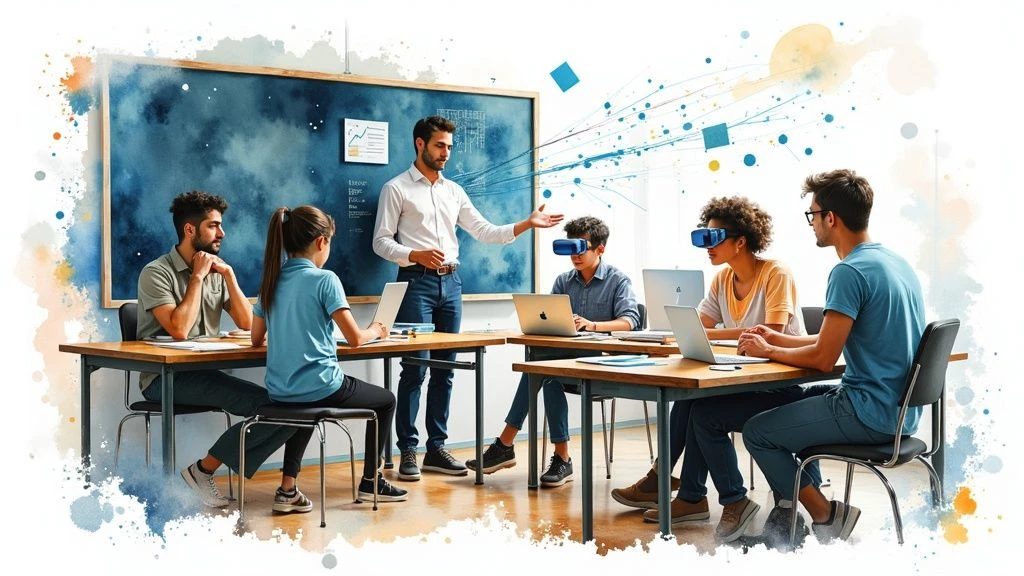
The New Era of Digital Education
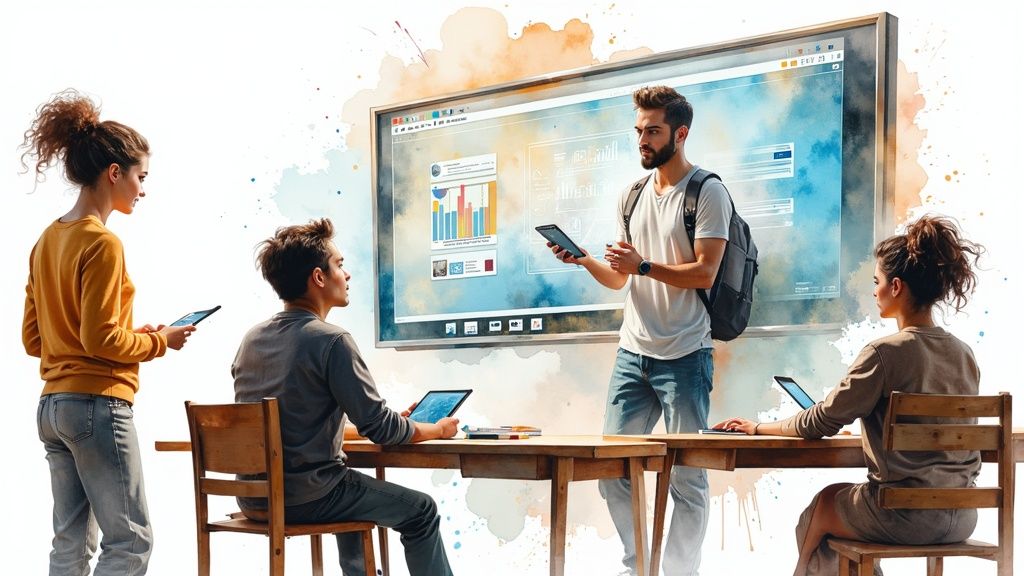
Education is changing in remarkable ways through technology. Students now learn through interactive online platforms instead of just traditional classrooms. This shift goes beyond adding new tools - it's about creating better ways for students to learn and grow. The focus is on making education more engaging and accessible for everyone.
The Rise of Digital Learning Platforms
Learning Management Systems (LMS) and other digital platforms have become essential tools in modern education. These systems help teachers share lessons, track progress, and communicate with students all in one place. The numbers tell an impressive story - since 2020, there's been a 32.07% jump in digital education platform usage. In the US, 80% of colleges now give credit for online courses, while South Korea's digital textbook market grows by 15.2% each year. Learn more about these trends at Digital Education Stats.
Personalization and Engagement
Digital tools help teachers understand and support each student's unique needs. Using helpful data, teachers can see exactly where students need extra help or more challenges. Think of a classroom where every student gets materials matched to their learning style and pace. Students also get to work together in new ways, sharing ideas and helping each other learn through online tools and projects.
Measuring Impact and Ensuring Excellence
Making digital learning work well takes careful planning. Schools need to watch important signs like:
- How involved students are in their lessons
- Whether students are learning better
- How well teachers can use the new tools
Good teaching still matters most - technology should help teachers do their job better, not replace them. It's about finding what works best for both teachers and students. The goal is simple: give students the knowledge and skills they need to succeed, using the best tools available.
Accelerating Change: Breaking Through Traditional Barriers
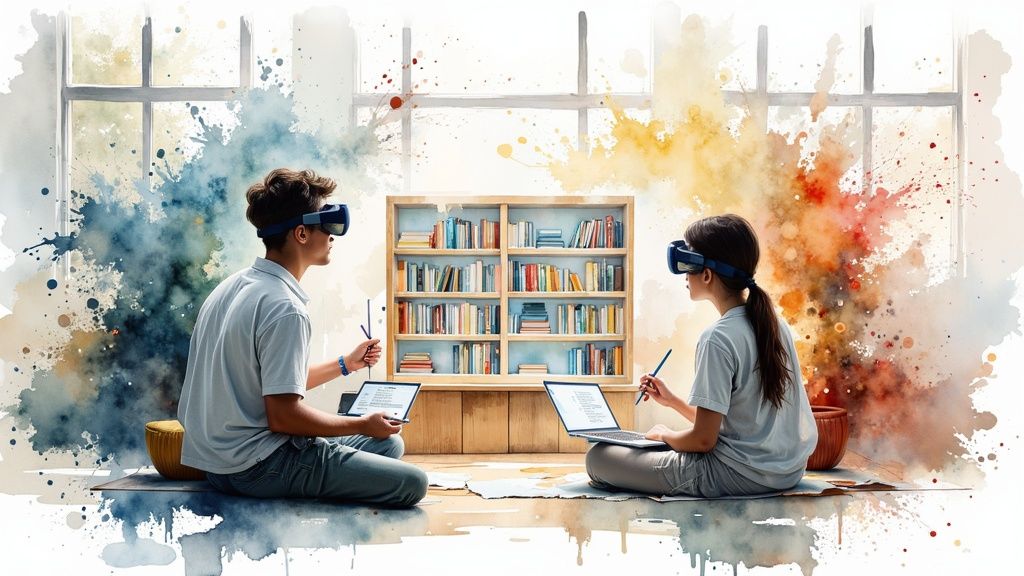
Making real changes in education goes beyond just adding new technology. We need to completely rethink how students learn, get teachers excited about new methods, and create plans that work long-term. Let's look at how schools are tackling these challenges and building better learning environments.
Overcoming Resistance and Building Buy-In
Change is hard, especially in education. Many teachers prefer their tried-and-true methods, while some administrators worry about investing in new systems. The key is having strong leaders with clear goals. When teachers help choose and implement new tools, they're much more likely to use them effectively.
Getting everyone on board means showing clear benefits. Teachers want to know how technology can help them teach better and save time on paperwork. Students get excited about more interesting ways to learn. Regular check-ins and ongoing training help build confidence as everyone adjusts to new ways of teaching and learning.
Creating Sustainable Digital Transformation Strategies
Good changes in education need to last. This means building systems that can grow and adapt over time. Schools need reliable internet and enough devices for all students. The COVID-19 pandemic showed just how important this is - schools had to quickly switch to online learning. According to the 2023 Digital Education Outlook by the OECD, this led to major improvements in how schools manage student information and online learning. Read more about these changes here.
Teachers need ongoing training to make the most of new tools. Schools should also track what's working and what isn't. By collecting feedback and watching student progress, they can keep improving their methods. This constant fine-tuning helps ensure that changes actually help students learn better.
Evaluating and Implementing Emerging Technologies
New educational tools come out all the time. Schools need smart ways to choose which ones are worth using. Key questions include:
- Will this actually help students learn better?
- Is it easy for teachers and students to use?
- Does it fit our budget?
- Does it match how we want to teach?
Starting small is smart - try new tools with one class before using them school-wide. Ask teachers and students what they think. Focus on tools that truly make teaching and learning better, not just the latest trendy gadgets.
Higher Education's Digital Revolution: Transforming Traditional Institutions
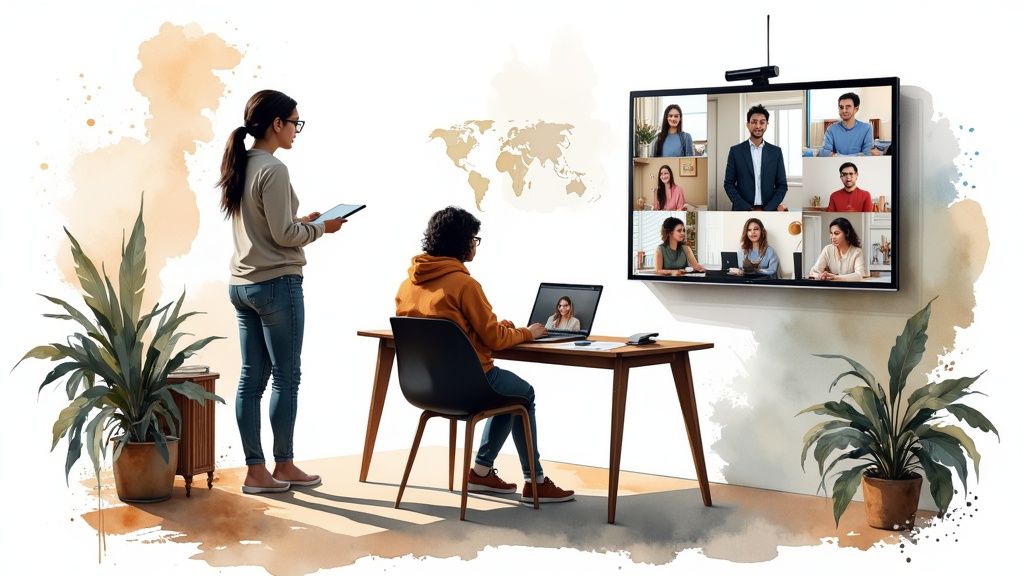
Colleges and universities are adopting new technology and teaching methods to better serve modern students. From updating course delivery to improving student services, schools are rethinking their approach to create more effective learning experiences.
Personalized Learning Paths and Hybrid Models
Schools now use data analytics to create custom learning experiences for each student. By tracking individual progress, they can provide extra help in challenging areas while allowing students to move quickly through subjects they grasp easily. The growing popularity of hybrid learning combines online and classroom instruction, giving students more choices in how and when they learn. This flexibility helps schools reach more students and support different learning preferences.
Enhancing the Digital Experience for Students
Modern education platforms make it simple for students to access course materials, connect with professors, and work with classmates online. Many schools add interactive elements like virtual science labs and simulations to make lessons more engaging. Students can now get help and resources any time, from anywhere. Schools are also making administrative tasks like registration and financial aid easier to manage online.
Building the Infrastructure and Training Faculty
Good technology and well-prepared teachers are essential for successful online learning. Schools are upgrading their systems with better internet access and learning management tools. But having the right technology isn't enough - teachers need training to use these tools effectively. Schools offer coaching to help faculty adapt their teaching methods for online and mixed formats. The shift to remote learning during COVID-19 pushed schools to quickly improve their online teaching capabilities. A recent study looks at both the difficulties and opportunities that emerged during this time. Learn more about these findings here.
Implementing Digital Tools That Drive Real Results
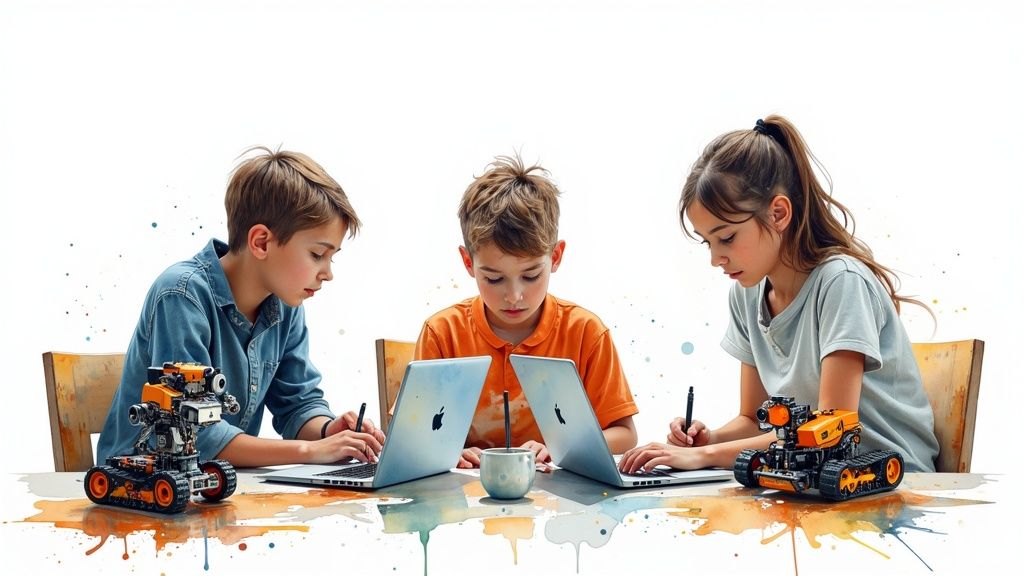
Let's get straight to what matters - choosing and using digital tools that actually help students learn better. The key is picking technology that truly improves how teachers teach and students learn, not just following the latest trends. Schools that succeed focus on tools that serve a clear purpose in the classroom.
Evaluating Tool Effectiveness
Before adopting any new technology, schools need to look carefully at what's available and how well it works. The main questions to ask:
- Does it match your teaching goals?
- Will students find it engaging?
- Can teachers and students use it easily?
- Is it worth the cost long-term?
- Can it grow with your needs?
Want to make your digital tools even better? Check out these visual learning strategies to boost their impact.
Selecting the Right Tools for Your Institution
Every school has different needs - what works great for one might not fit another. Some schools need tools for personalizing each student's learning path, while others want platforms that help students work together. The most important thing is choosing tools that directly solve your specific challenges.
Integrating Technology Effectively
Getting the most from digital tools takes more than just handing them out. Teachers need proper training to:
- Blend technology smoothly into their lessons
- Keep track of how students are doing
- Adjust teaching based on student data
- Handle technical issues that pop up
Having ongoing tech support is crucial for dealing with any problems quickly.
Measuring the Impact on Learning
To know if your digital tools are really helping, you need to track results. Set up clear ways to measure:
- How engaged students are
- Test scores and grades
- What teachers and students think
- Where students need extra help
Using this data helps schools make smart choices about which tools to keep, change, or replace. Regular check-ins and adjustments ensure technology actually makes learning better, not just different.
Creating Equitable Access in Digital Education
Education technology offers amazing benefits, but a key challenge remains: making sure everyone can access these tools. We need to close the digital divide to create a fair education system for all students. This means giving every student the right tools and resources - regardless of their family income, where they live, or any disabilities they may have.
Addressing the Digital Divide
Many students still lack basic technology access at home. Even when schools provide laptops or tablets, poor internet connection can make online learning difficult or impossible. Some students can fully participate in digital learning while others get left behind. That's why programs that provide affordable internet and devices to families who need them are so important.
Creating Inclusive Digital Learning Environments
Having technology isn't enough - we need to make sure everyone can actually use it effectively. This means designing materials that work for students with disabilities, different learning styles, and varying comfort levels with technology. Simple solutions like video captions, text-to-speech tools, and activities that suit different learning approaches can make a big difference. Check out our article about fun educational coloring pages for kindergarteners for more ideas.
Supporting Underserved Communities
Schools in underserved areas need extra support to make digital learning work. Teachers need training to use technology well in their classrooms. Parents and community members need help learning digital skills so they can support students at home. Using content that reflects students' cultures and experiences helps keep them engaged and makes learning more meaningful.
The Role of Policy and Community Engagement
Making digital education fair requires everyone working together. Government officials need to provide funding and set standards for accessibility. Community groups can offer digital literacy programs and places where students can use technology outside of school. Local businesses can help by donating devices or internet access. When everyone pitches in, students have a better chance of success.
Measuring Impact and Ensuring Accountability
We need to track how well these efforts are working and hold people responsible for results. Looking at data about technology access, digital skills, and student achievement across different groups helps show where gaps still exist. Regular evaluation helps us adjust our approach and make sure digital learning truly helps all students succeed.
The Future of Learning: Emerging Technologies and Trends
Education is evolving rapidly with new technologies creating exciting possibilities. Students and teachers are discovering fresh ways to learn and interact through digital tools that make education more personal and engaging. Let's explore the key technologies and approaches shaping modern learning.
The Rise of Artificial Intelligence in Education
Artificial intelligence (AI) is making education more responsive to individual needs. Just like having a personal tutor, AI systems can adapt lessons to match how each student learns best. These smart platforms track student progress, identify where they need help, and provide targeted resources. For example, AI can suggest customized practice exercises or give instant feedback on homework.
Immersive Learning with Virtual and Augmented Reality
Virtual Reality (VR) and Augmented Reality (AR) are bringing lessons to life in amazing ways. Students can step into historical events through VR or examine 3D models floating in their classroom with AR. These tools are especially helpful for teaching complex topics that are hard to explain with just books and lectures. Different types of learners benefit from seeing and interacting with content in 3D space.
Personalized Learning: Making Education Work for Each Student
Modern education recognizes that every student has their own learning style and pace. AI-powered systems can build custom learning paths based on each student's strengths and challenges. This means students get exactly what they need, when they need it. You might be interested in: Powerful Creative Thinking Exercises to Unlock Innovation Potential.
How Schools Are Getting Ready for Change
Forward-thinking schools are investing in new tools and training to prepare for the future. This means:
- Upgrading their technology systems
- Training teachers to use new digital tools
- Creating flexible learning spaces
- Building expertise in modern teaching methods
Smart Ways to Add New Technology
Schools need to be thoughtful about which technologies they adopt. Key considerations include:
- How well the tool supports learning goals
- Whether teachers and students can use it easily
- If it truly improves learning outcomes
- The training and support needed
Ready to add some creativity to your learning space? Try ColorPageAI to create unique coloring pages that make learning fun and engaging. Perfect for classrooms or home learning!
Ready to start coloring?
Join ColorPage.ai today and get 5 free credits to create your own custom coloring pages!
Start creating